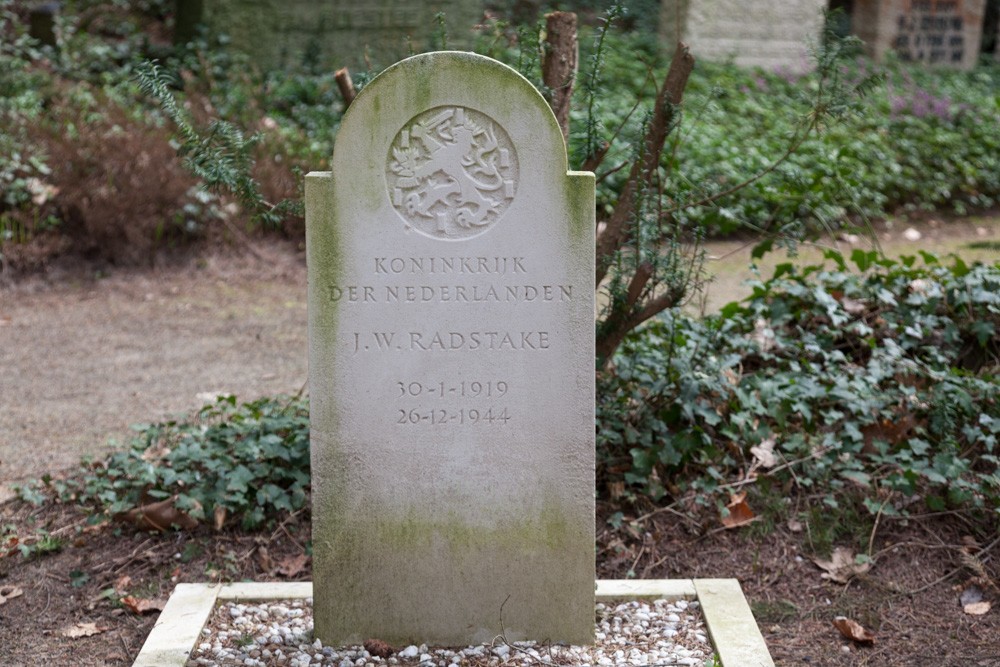Every year on 4 May at 6:45 p.m., the municipality of Lochem organises a silent procession through this cemetery. A moment of silence is observed at the graves of the fallen, and flowers are laid in remembrance.
John Edwin Hatch
John Edwin Hatch had already enjoyed a long career as a professional soldier when he was fatally wounded along the River IJssel on the morning of 11 April 1945. He died later that day in De Cloese Castle, which was then serving as an emergency hospital. That morning, Hatch and his unit had been tasked with creating a smokescreen near Deventer, which was still under German control. When they encountered an SS patrol, gunfire erupted. Despite being seriously wounded, Hatch continued firing and even managed to drive the SS patrol back — preventing them from discovering the plan to generate smoke using oil and grease burners.
For his courage, Hatch was posthumously awarded the Military Medal. The letters “MM” engraved on his headstone indicate this honour.
Geoffrey Stevenson Stout
In September 1944, Lochem witnessed its first fierce air battles between Allied and German fighter planes. At least 11 German aircraft were shot down, along with several American planes. These clashes continued throughout the autumn and winter. On 23 September, a British bomber crashed at the edge of Het Grote Veld. The pilot, Geoffrey Stevenson Stout, did not survive. He was buried here a week later.
Jan Willem Radstake
Jan Willem Radstake was just 25 years old when he died. This young father of five was sent to work in Berlin in the summer of 1942. Occasionally, he was granted leave and returned to Lochem. One such visit took place in May 1944, before the birth of his youngest son. He decided not to return to Germany and went into hiding. However, a neighbour betrayed him to the local Landwacht in exchange for a mere 25 guilders. In July 1944, Jan Willem was deported to eastern Germany, where he ended up in a forced labour camp. The combination of heavy work, malnutrition, and poor hygiene proved fatal. He died on Boxing Day, 1944.
Evert Jan Leussink
Evert Jan Leussink was also a victim of forced labour in Germany. With German men fighting on multiple fronts, there was a severe labour shortage in German industry and agriculture. As early as the summer of 1940, the Nazis encouraged unemployed Dutch men to work in Germany, but most declined. In early 1942, the occupiers changed their approach and ordered Dutch factories to surrender part of their workforce. That summer, Evert Jan was called up for the Arbeitseinsatz. He was sent to Raguhn, where he worked in an aircraft factory. On 19 December 1944, he died of diphtheria. He left behind a wife and two children.
